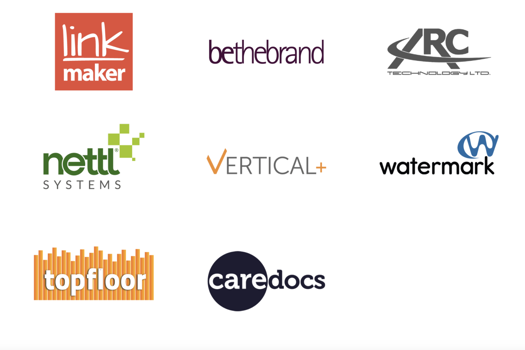Across all three bands that comprise large-format – systems up to around one metre, 2-3m, and the grand-format machines of up to 5m width respectively – hardware sales are buoyant and largely at the expense of conventional process and practice.
All in all, the UK market probably sustains around 5,500 wide-format systems of which two-thirds fall into the lower band, estimates Roland DG head of sales James Hobday. “We reckon to hold a 62% market share in solvent printers up to 2.5m width, and are forecasting to sell another 780-plus systems this year.
“While the sign and display print sector might be approaching saturation point, there’s plenty of evidence that commercial printers are now starting to extend into wide-format.
“Our research shows that 93% of commercial printers are outsourcing wide-format in one form or another. In reality, though, the investment of, say, £9,000 in a 30-inch wide-format system would make sense for those printers even if it was just for the sake of bringing some label printing in-house.
Compound growth rates for display and outdoor graphics are approximately 20%, so it’s not impacting on the established wide-format printer. There is still loads of slack in the market.”
Although there is no coercion to do so, most Roland adopters use the company’s own inks. Indeed, consumables account for 18% of Roland’s annual £12.3m UK turnover, and ink sales have doubled over the past three years. “The hardware sales beget the consumable sales,” says Hobday.
Therein lies one of the fundamental underpinnings of the large-format market, says Epson channel manager Nick White. “Our business model is similar with all the companies we compete with in this sector; equipment is sold in order to attract the consumables business. That’s what pays our wages and always has been. Nothing’s changed.”
In other words: it’s the consumables, stupid. Epson hardware is engineered such that only its own inks are compatible, and that is “part of the quality proposition that our customers are buying into”, says White. “It’s achieved via two components within the printer: the printhead system itself and the ink-set.” With a 66% share of the photographic and fine art reproduction market, it’s a formula that appears to suit both supplier and customer-base equally.
Linked solutions
Selling in excess of 300 large-format systems per year – and ranked as Agfa’s top pan-European re-seller – B&P Lightbrigade represents a number of leading brands as well as marketing its own Uniform range.
According to director David Burton: “We wake up every morning to sell hardware, yet of our three divisions, that’s the non-profit making one. We recover all of our income in ink and media, but it’s the hardware that covers all the marketing spend. And, of course, we can’t sell the ink without it. A printer in isolation is almost of no consequence; it’s only when you mix it with the RIP, the ink and the media that it becomes a solution. To step outside of it just makes life difficult for people, and the savings aren’t great.
“With a solvent or UV system now you’re probably paying less than £2 per square metre in media and ink costs; it’s not a very expensive method, and you’re selling that product at £15-20 per square metre. The printer is better off spending his time finding new customers rather than trying to cut costs.”
Lifelong sales
The cost of hardware is dropping, but then so too is the cost of ink. The difference, of course, is that the latter keeps on selling throughout the life of the machine: 3-5 years for a solvent printer and more than 10 years for grand-format unit. Back-up services extend an installation’s revenue earning capacity to some extent, but it’s the ongoing supply fuel that makes it profitable.
“As prices continue to fall we just have to be more efficient,” says Burton. “If we lost our ink business we’d be pretty much non-viable; as would everyone else’s hardware business.”
It’s a scenario that Doug Gilbertson of HP re-seller City and West End Solutions doesn’t foresee ever occurring. “Most vendors have chosen to stick with genuine branded ink for all systems that they supply as there is a recognition that major manufacturers have chemicals and patents to ensure superior performance and less denigration to the machines. Hardware and supplies are often manufactured as one system; the future prospect is fine.”
Market development
So what is in store for the large-format sector? There is clearly plenty of scope for onward development across all aspects of the overall production process, and their track record to date suggests that the platform manufacturers are the ones most likely to be bringing it to market. Ongoing consolidation, however, logically points to less choice of hardware sooner or later.
Ink suppliers have fared less well in directly extending upstream. “We’re in the hardware business, we’re also in the ink business. They’re both strategic elements within the context of providing a total solution. However, hardware is by far the most important revenue earner,” says EFI Vutek marketing vice president Chuck Dourlet.
“Within the industry there are ink companies like DuPont that have tried to get into hardware from the consumables end. Then you have companies like us that started from a hardware position and got into ink as a part of the solution. It gives us control over the entire customer experience, so for us the two are really joined at the hip.”
Strategic joint venture deals such as the co-development between Sun Chemical and Inca Digital of the FastJet have proved to be more promising. In the meantime, while third-party inks have largely failed below 2.5m width says James Hobday, they’re more likely to succeed at grand-format level.
Hardware systems suppliers without a locked-in ink solution are the most vulnerable, believes Mike Willis of inkjet technology consultancy Pivotal Resources.
“Firstly, they have to survive just on the hardware revenue. Then they have to decide who is going to maintain the machine, bearing in mind that it can be screwed up by the ink. Thirdly, inks still have to be optimised to printheads and, if we’re talking UV, then likewise curing systems and so forth.
“With UV-curable there is nowhere near the freedom to choose your ink supplier like there is with water-based inks. Also, people are buying reliability and minimal wastage, they’re not likely to jeopardise that by saving a few pence per litre.”
Early days
According to Willis, it is still early days for UV inkjet and, in overall terms of the evolutionary scale of ink development with vendors constantly developing new resins and photo-initiators, the technology is still in its infancy comparatively. The balance between hardware and consumables, however, could shift.
“We’re probably looking at somewhere between five and 10 years for consumables to become the dominant purchasing decision across the complete package including the hardware.
“The margins on ink are high at the moment, but are decreasing and will be much lower in the medium to long term. So ink may become a commodity eventually, or a differentiator, who knows – currently, on the grand scale of things, UV-curable inkjet is really only fulfilling niche and high-value applications. To compete directly against existing print technologies such as screen and flexo, consumables costs have to drop. That will occur as ink volumes increase and margins are reduced, either through competition or as a means of buying entry into existing markets.”
RAISING THE STAKES: SUPPLIER DEVELOPMENTS
DuPont’s recent decision to cease manufacture of its Cromaprint digital UV-curing equipment range might in part reflect the high stakes now being played for in the large-format sector, which has seen a spate of consolidation over the past 18 months, including EFI’s acquisition of VuteK and inkjet developer/hardware integrator Jetrion, and Inca Digital becoming a part of Dainippon Screen.
HPl, on whose back DuPont originally built up its desktop ink business, looks likely to become the industry’s dominant, and indeed domineering, presence, having snapped up Scitex Vision (and consequently the Israeli technology developer’s new piezo printhead, now said to be in production), McDermid in the mid-range market, and within the past two months macroprinter Nur.
Competition is never far from the horizon however, points out Mike Willis: “At the same time that the West consolidates, new hardware suppliers are emerging in China, India, Russia, Eastern Europe and South America. In most cases these are currently serving local markets – but it’s worth noting that in common with systems being supplied by the major vendors, they use the same printheads of which Xaar and Fujifilm Dimatix are the dominant industry suppliers.”








